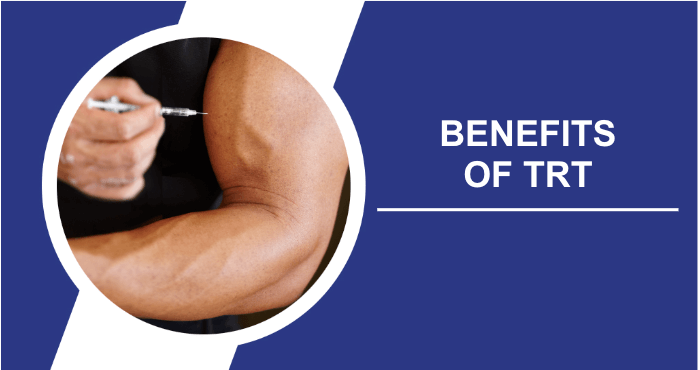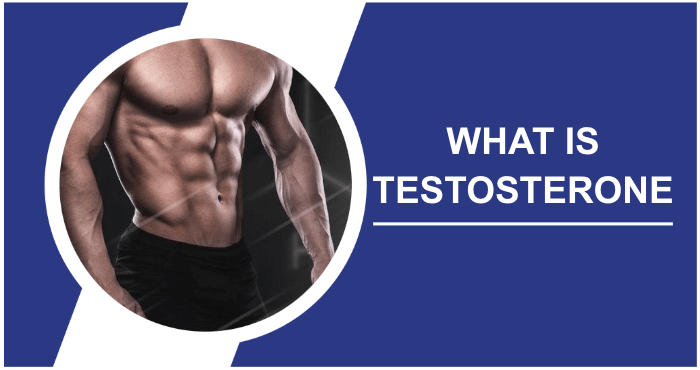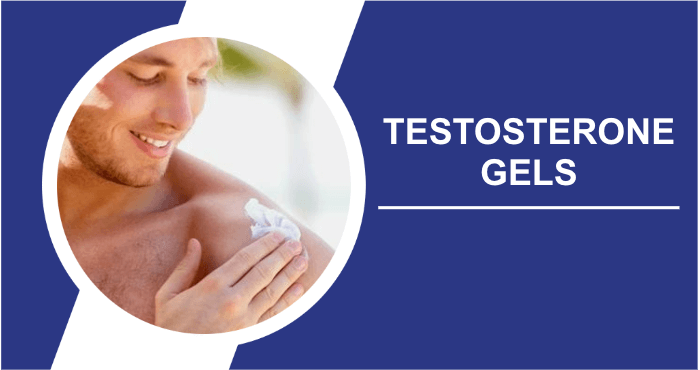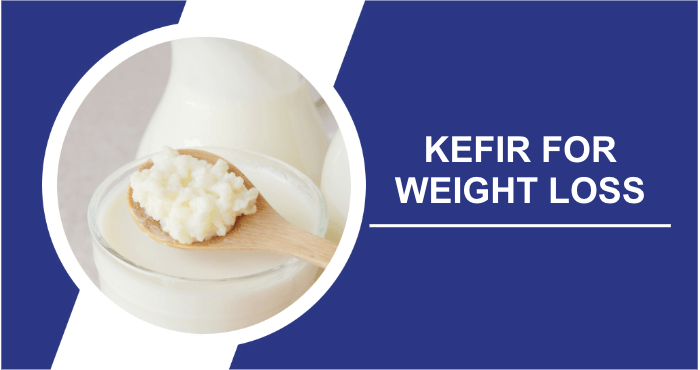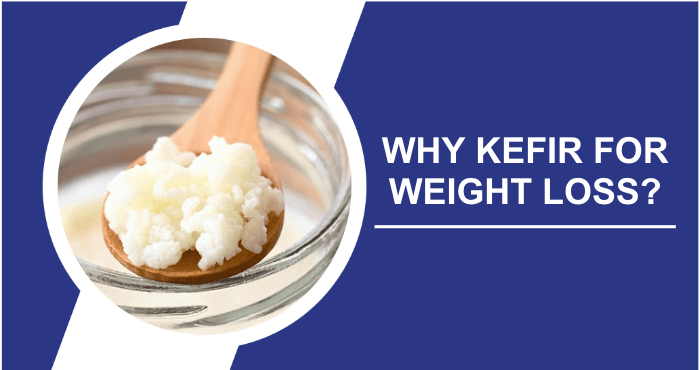Aging is becoming a thing of the past. Thanks to technological advances, medications, and nutritional supplements, we can all extend our active lives well beyond what was once considered our prime years. One method of achieving this lifestyle advantage is to increase testosterone levels. Two widely accepted options for achieving this are testosterone boosters and testosterone replacement therapy (TRT).
Although both testosterone boosters and TRT share the common goal of increasing testosterone levels, their approaches and results differ significantly. In this article, I will explore the field of testosterone enhancement, analyzing the characteristics, benefits, and potential drawbacks associated with both testosterone boosters and TRT. By the end, you will have a better understanding of which method best suits your needs and serves as the most appropriate option for you.
Optimizing Testosterone Levels For Extended Vitality
Discover how to defy aging with advances in technology, medications, and supplements. Learn about two main methods of boosting testosterone levels: testosterone boosters and testosterone replacement therapy (TRT). While they share the goal of increasing testosterone, they differ in approach and results. Explore the features, benefits, and potential drawbacks of both options to make an informed choice for a vibrant and active lifestyle.
What Are Androgens?
Androgens are like the backstage crew of our bodies, quietly playing a crucial role in both men and women. These hormones, primarily testosterone, give us our distinctive masculine features, such as facial hair and a deeper voice. But they’re not just about looks; they also affect our energy, mood, and overall well-being, making them essential players in the symphony of human biology.
What Is The Role Of Androgens In The Body?
Androgens are the behind-the-scenes heroes of our bodies, responsible for a wide range of functions. These hormones, like testosterone, influence the development of male sexual characteristics, but they also play a role in maintaining bone density, muscle mass, and even mood. They’re the silent influencers of our vitality, keeping us in balance and helping us stay strong, both physically and emotionally.
What Is TRT?
As men age, their natural testosterone levels tend to decline, leading to a decrease in sexual desire, reduced energy levels, mood swings, and loss of muscle mass. Testosterone Replacement Therapy (TRT) has recently gained popularity as a medical intervention to address these concerns.
The treatment involves the supplementation of external testosterone to restore these levels to a normal range. TRT can be administered through a prescription testosterone injection, as well as through gels, pellets, and testosterone patches. Testosterone therapy is most effective when supervised by a doctor who specializes in hormone treatment.
With proper guidance, it can be done safely. Initially, a TRT clinic will only recommend TRT if it is deemed necessary for your specific situation. They will then work with you throughout the process to ensure that testosterone treatment achieves its intended results while minimizing any unwanted side effects.
What Is Testosterone?
Let’s start with a basic explanation of testosterone. Despite common misconceptions, testosterone is a hormone found in both men and women, although it is more prevalent in men. It plays a crucial role in the development of male characteristics such as facial hair, a deeper voice, and muscle development. It also helps maintain bone density and energy levels.
What Are Testosterone Boosters?
Testosterone boosters are dietary supplements that contain a blend of vitamins, minerals, and herbs specifically designed to naturally increase testosterone levels. It’s important to understand that testosterone boosters are different from anabolic steroids or testosterone replacement therapy (TRT). Testosterone boosters do not aim to artificially increase testosterone levels beyond natural levels, and they contain only natural ingredients, eliminating the need for a prescription.
While testosterone therapy remains a well-established treatment option for individuals with low testosterone (or “low T”), many individuals prefer to explore natural alternatives before considering hormone replacement therapy. Starting hormone replacement therapy is a big decision, often involving regular testosterone injections. Below are some scientifically backed ingredients commonly found in testosterone boosters:
- Ashwagandha: Ashwagandha, a renowned herb, is known for its stress and anxiety reducing properties. There is also evidence that it may increase serum testosterone levels.
- Fenugreek: Fenugreek is an herb believed to increase libido and improve blood sugar metabolism, which may have a positive effect on testosterone levels. Research has shown an association between fenugreek and increased testosterone levels in men.
- Vitamin D: Vitamin D deficiency is common among people with limited sun exposure. Vitamin D offers several health benefits, including its role in testosterone enhancement. Studies have shown that vitamin D supplementation can increase testosterone levels in men with low vitamin D levels, especially after one year of supplementation.
- Zinc: Zinc is a vital mineral essential for maintaining a robust immune system, cognitive function, and normal testosterone levels. Research suggests that individuals with zinc deficiency may experience increased testosterone levels with zinc supplementation. Including zinc-rich foods such as beef, seafood, legumes, nuts, and seeds in the diet may also be beneficial.
- Forskolin: Forskolin, derived from the plant Coleus forskohlii, may affect testosterone synthesis, although more research is needed. Some studies have suggested that forskolin supplementation for 12 weeks may lead to increased testosterone levels and improved body composition in overweight individuals.
Do Testosterone Boosters Work?
The pressing question on many people’s minds is whether testosterone boosters are effective. The simple answer is yes, testosterone boosters can indeed increase your natural testosterone levels. Some vitamins, minerals, and herbs have substantial evidence to support their efficacy, as mentioned above.
Pros And Cons Of Testosterone Boosters
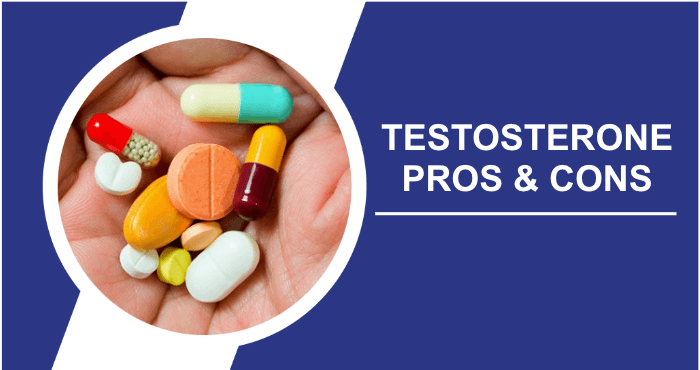
Testosterone boosters have gained popularity among men seeking to improve performance and treat symptoms of low testosterone without resorting to testosterone replacement therapy (TRT). However, like any dietary supplement, testosterone boosters come with their potential benefits and drawbacks.
Pros Of Testosterone Boosters
Here are the benefits associated with the use of testosterone boosters:
- Increased Testosterone: The primary benefit of testosterone boosters is their ability to increase testosterone levels. While they may not significantly increase testosterone levels, there is evidence that the right testosterone boosters can lead to an increase.
- Increased libido: Low testosterone levels can contribute to a decrease in sex drive. Testosterone boosters can help some people experience improvements in libido and sexual performance.
- Increased muscle mass: Testosterone plays a crucial role in muscle development, and the use of testosterone boosters may result in enhanced muscle growth and strength gains, especially when incorporated into a regular strength training regimen.
- Available over the counter: One of the most notable advantages of testosterone boosters is that they are available over the counter. They do not require a prescription to purchase.
Cons Of Testosterone Boosters
Here are some of the disadvantages associated with testosterone boosters:
- Unregulated products: The market for testosterone boosters is saturated with products, and not all of them undergo rigorous testing for safety and effectiveness. Some supplements may contain undisclosed ingredients or potentially unsafe substances, posing risks to users.
- Limited evidence: While certain ingredients in testosterone boosters have research to support their effectiveness, many popular ingredients lack substantial scientific evidence to back up their claims.
- Overhyped: Testosterone boosters are often overhyped. It’s important to understand that even the most effective testosterone boosters cannot replicate the effects of steroids, despite exaggerated claims.
TRT Pros And Cons
Testosterone Replacement Therapy (TRT) is a groundbreaking treatment in many ways, and many users attest to its benefits. However, like any medical intervention, it has its pros and cons.
Pros Of Testosterone
There are several significant benefits associated with TRT, some of which include
- Increased testosterone levels: TRT is the most effective method for increasing testosterone levels. By restoring testosterone levels to a normal range, TRT can alleviate symptoms associated with low testosterone.
- Increased muscle mass and strength: Testosterone replacement therapy has the potential to enhance muscle gains and increase strength, especially when incorporated into a resistance training regimen.
- Increased energy: TRT users often report an increase in energy levels shortly after starting therapy.
- Improved mood and cognitive function: Some testosterone therapy users report a positive effect on mood, concentration, and cognitive function.
- Maintaining bone density: Adequate testosterone levels are essential for maintaining bone density, and TRT may even help reduce the risk of osteoporosis.
Cons Of TRT
Here are some of the disadvantages associated with Testosterone Replacement Therapy (TRT) that you should be aware of:
- Potential side effects: Testosterone therapy can cause various side effects, including acne, fluid retention, hair loss, and mood changes. These side effects may vary in severity from person to person.
- Long-term commitment: TRT is often a lifelong treatment, and discontinuing it may result in a return to low testosterone levels and recurrence of associated symptoms. Commitment to ongoing treatment is necessary for sustained benefits.
- Prostate and cardiovascular risks: There is ongoing debate about whether testosterone therapy may increase the risk of prostate cancer and cardiovascular events. It is important to discuss individual risk factors with a healthcare provider before starting TRT to make an informed decision.
- Fertility issues: TRT may suppress sperm production and fertility, which is a consideration for men who want to father children. Discussing fertility preservation options with a healthcare provider before starting TRT is advisable for those concerned about fertility.
It’s important to note that close monitoring by a healthcare provider and regular blood tests can help reduce many of the potential problems associated with TRT.
How To Get A TRT?
To begin the process of obtaining Testosterone Replacement Therapy (TRT), your first step is to research TRT clinics in your area or get a referral from your doctor. Depending on where you live, you may have several viable options. Fortunately, in today’s digital age, online clinics are accessible to everyone, allowing you to begin the process immediately. Once you have chosen a clinic, it is important to schedule an initial consultation.
During this meeting, your doctor will take your medical history and arrange for a blood test. Your doctor will then use the results of the blood tests to determine whether testosterone replacement therapy is warranted. Before starting TRT, your healthcare provider may recommend addressing lifestyle factors.
Improving sleep quality, exercising regularly, and eating a balanced diet can all affect testosterone levels. Once your doctor has determined that TRT is the best option for you, he or she will develop a treatment plan tailored to your specific needs. Don’t worry, your relationship with the clinic will continue.
Once you begin TRT, your doctor will closely monitor your progress and make adjustments to your dosages to achieve the most favorable results. If you are looking for recommendations for the best online trt clinics, I can recommend numerous individuals who have experienced successful testosterone enhancement through Fountain TRT. Here is a link to their online TRT assessment so you can begin the process without delay.
Testosterone Boosters Vs. TRT: Key Differences
Looking for a quick overview? Below is are two lists comparing Testosterone Boosters and Testosterone Replacement Therapy (TRT) to help you determine which option may be more suitable for your needs.
Testosterone Boosters
- Contain vitamins, minerals, and herbs
- Available over the counter
- Comes in pill, capsule, or powder form
- Self-administered without medical supervision
- Safety concerns due to limited regulation
- Potential for undisclosed ingredients
- Binding varies based on individual use and goals
- Moderate increase in testosterone levels, limited by natural limits
TRT (Testosterone Replacement Therapy)
- Administered testosterone
- Requires prescription
- Available as injections, gels, patches, or pellets
- Monitored and administered by a physician
- Prescribed under medical supervision
- Possible side effects with medical monitoring
- Often lifelong treatment
- Significant increase in testosterone levels
Top Testosterone Booster Supplements
As mentioned above, the market is flooded with testosterone-boosting supplements, and many are surrounded by hype. However, it’s important not to dismiss them entirely, because there are indeed testosterone boosters that can deliver results. When you’re shopping for testosterone supplements, look for products that contain a balanced formula with clinically effective doses of certain key ingredients.
Examples of such ingredients include vitamin D, zinc, forskolin, fenugreek, and ashwagandha. If your goal is to naturally increase your testosterone levels, the most effective approach is to choose a product that combines multiple testosterone-boosting components.
What Diet Is Beneficial For Testosterone Deficiency?
Managing testosterone deficiency through diet requires a thoughtful approach. Including foods rich in essential nutrients such as zinc, vitamin D, and omega-3 fatty acids can be beneficial. Oysters, lean meats, nuts, and seeds are excellent sources of zinc, which is known for its testosterone-boosting properties. Exposure to sunlight or vitamin D supplements can help maintain healthy levels.
Adding fatty fish such as salmon or flaxseed to your diet provides omega-3 fatty acids, which support hormone production. Equally important is a well-rounded, balanced diet that helps you maintain a healthy weight and minimize excess body fat, which can negatively affect testosterone levels. Prioritize whole foods and avoid excessive sugar and processed foods to support your hormonal health.
What Side Effects can Excess Testosterone Cause?
Excess testosterone can be a mixed bag of effects, much like a double-edged sword. On the one hand, it can cause mood swings, irritability, and even aggression, earning it the nickname “roid rage”. Acne and oily skin can also be unwelcome guests. But it can also cause hair loss, which is ironic given its role in male-pattern baldness.
In women, excess testosterone can disrupt menstrual cycles and lead to unwanted facial hair growth. Sleep disorders and infertility are other potential complications. So while testosterone is essential, striking the right balance is critical to avoiding these unwanted side effects.
Frequently Askes Questions
How can I tell if my testosterone levels are low?
Signs of low testosterone can include decreased sexual desire, fatigue, decreased muscle mass, mood swings, and difficulty getting an erection. A blood test is the definitive method to determine your total testosterone levels.
Are testosterone supplements better than injections?
For most people, injectable testosterone is the most effective approach to increasing testosterone levels. Testosterone injections (TRT) are administered under medical supervision and provide precise dosage control, whereas testosterone supplements are dietary supplements with varying degrees of effectiveness.
Is it possible to increase testosterone levels without TRT?
Certainly, lifestyle changes such as regular exercise, maintaining a healthy body composition, getting enough sleep, and managing stress can naturally increase testosterone levels in certain cases. In addition, testosterone supplements offer another viable option for increasing your testosterone levels naturally.
Are testosterone supplements safe to use?
The safety of testosterone supplements depends on their specific composition and individual health circumstances, but in general they tend to be safe.
Can I use TRT indefinitely?
TRT can serve as a lifelong treatment option for individuals with clinically diagnosed low testosterone levels and persistent symptoms. By working closely with a healthcare provider, it is possible to continue TRT for life.
Conclusion
In conclusion, both testosterone boosters and replacement therapy are valid options for improving testosterone levels and overall health. Testosterone boosters offer a more natural approach, while TRT offers a regulated and closely monitored medical intervention. The decision between the two depends on individual needs, health status, and personal preferences. Before embarking on any hormone therapy journey, it is imperative to work with a qualified healthcare professional.
Their expertise will guide you to the most appropriate option and ensure your safety and well-being. Furthermore, there is no obligation to begin testosterone injections after consulting with a clinic. If you choose this route, personalized guidance is essential to unlock the full potential of testosterone optimization. Armed with knowledge and professional support, you can take steps toward achieving the vitality you rightfully deserve.
Sources
- Pilz, S., Frisch, S., Koertke, H., Kuhn, J., Dreier, J., Obermayer-Pietsch, B., Wehr, E., & Zittermann, A. (2011). Effect of vitamin D supplementation on testosterone levels in men. Hormone and metabolic research = Hormon- und Stoffwechselforschung = Hormones et metabolisme, Read more
- Chang, C. S., Choi, J. B., Kim, H. J., & Park, S. B. (2011). Correlation between serum testosterone level and concentrations of copper and zinc in hair tissue. Biological trace element research, Read more
- Godard, M. P., Johnson, B. A., & Richmond, S. R. (2005). Body composition and hormonal adaptations associated with forskolin consumption in overweight and obese men. Obesity research, Read more
- Chauhan, S., Srivastava, M. K., & Pathak, A. K. (2022). Effect of standardized root extract of ashwagandha (Withania somnifera) on well-being and sexual performance in adult males: A randomized controlled trial. Health science reports, 5(4), e741. Read more
- Mansoori, A., Hosseini, S., Zilaee, M., Hormoznejad, R., & Fathi, M. (2020). Effect of fenugreek extract supplement on testosterone levels in male: A meta-analysis of clinical trials. Phytotherapy research : PTR, Read more





